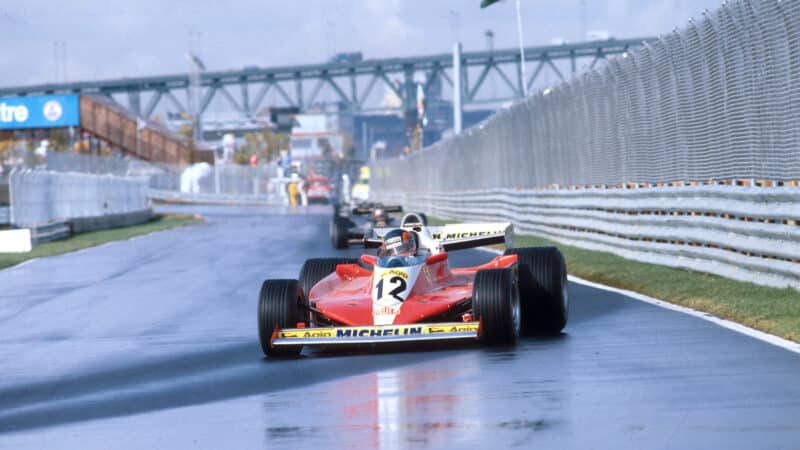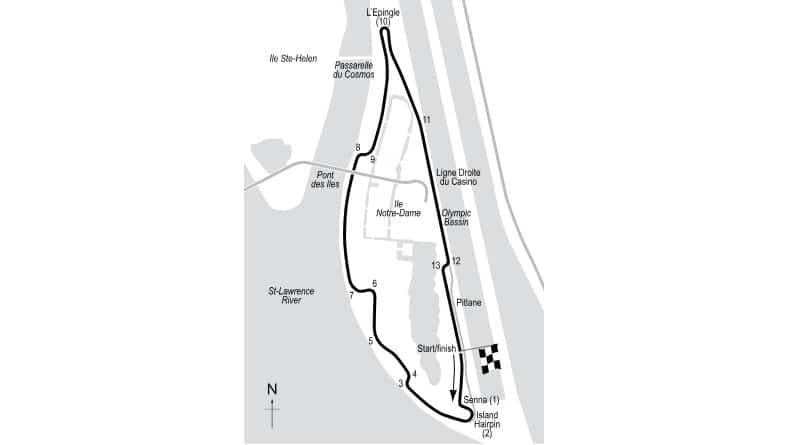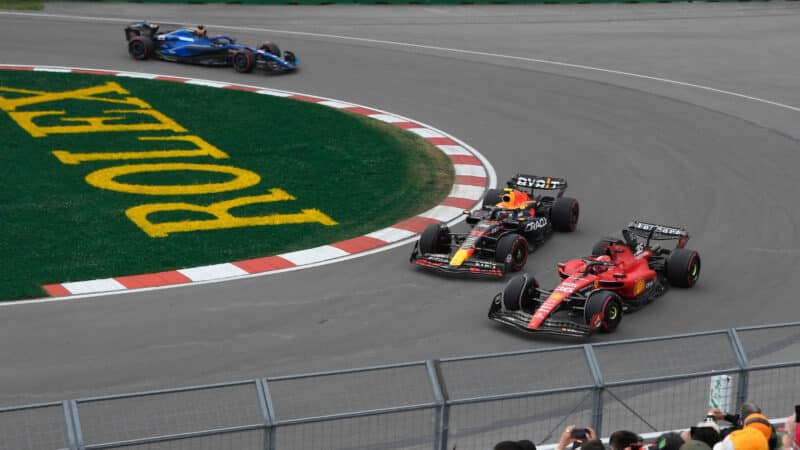F1 in Montreal: How Circuit Gilles Villeneuve was built in the middle of a river

Gilles Villeneuve during the 1978 Canadian GP in Montreal
Getty Images
The Circuit Gilles Villeneuve is, like other venues on the Formula 1 calendar, the indirect result of a city hosting a major event unrelated to racing. In this case, of the Expo 67, the World’s Fair held in 1967 in Montreal.
The track is located on Île Notre-Dame, a man-made island in the St. Lawrence River.
Construction of the island began in August 1963, and it was created using millions of tons of rock excavated during the construction of Montreal’s Metro system.
The island was essentially complete by mid-1964 and opened to the public for Expo 67, later hosting the rowing events for the 1976 Montreal Summer Olympics.
Construction of the circuit didn’t start until 1978, when F1 felt the need to find a modern venue for the Canadian Grand Prix, which had previously alternated between Mosport Park and Mont-Tremblant.
The inaugural event at the new venue saw a capacity crowd and was won by Gilles Villeneuve in a Ferrari, marking his first F1 victory.
Originally named Circuit Île Notre-Dame, the track was later renamed Circuit Gilles Villeneuve in 1982, following the death of the Canadian driver earlier that year.

The current Montreal circuit layout
Evolution
The circuit was designed by Canadian engineer Roger Peart and since it mainly uses the island’s repurposed roads, it didn’t take long for it to be ready, hosting its first F1 race in 1978.
The layout is renowned for its mix of straights and technical low-speed chicanes.
Notable features include the tight hairpin turn known as L’Epingle and the infamous “Wall of Champions”, a barrier at the final chicane named that way after Damon Hill, Michael Schumacher, and Jacques Villeneuve all crashed into it during the 1999 Canadian GP.

The L’Epingle hairpin
Grand Prix Photo
Over the decades, the circuit has undergone several modifications, although the layout has remained mostly unchanged, with minor tweaks.
In 1979, the Casino corner – Turn 1 back then – underwent a change to make it less pronounced and almost part of the start-finish straight.
In 1988, after a brief hiatus in 1987, the pits and start/finish line were moved to their current location at the exit of the fast right-left chicane. This change also altered the run towards the new first corner, straightening out a previous kink.
A temporary chicane was added between the Casino corner and the hairpin to reduce speeds in the aftermath of the tragic 1994 San Marino Grand Prix weekend.
The chicane was removed alongside the Casino corner in 1996, creating the back straight leading to the final chicane.
In 2002, the pitlane exit was moved to improve safety, preventing cars from rejoining at high speed into Turn 1, and the Turn 10 hairpin was also moved back, shortening the circuit slightly and allowing for more run-off area.
Since then, only minor changes have been made but the layout has remained the same.
Technical details
| Detail | Value |
|---|---|
| Full Circuit Length | 4.361 km (2.71 miles) |
| Number of Turns | 16 |
| Main Straight Length | 1,190 m |
| Fastest Race Lap in F1 | 1:13.078 (Valtteri Bottas, 2019) |
F1 race winners
| Year | Winner | Team |
|---|---|---|
| 1978 | Gilles Villeneuve | Ferrari |
| 1979 | Alan Jones | Williams-Ford |
| 1980 | Alan Jones | Williams-Ford |
| 1981 | Jacques Laffite | Ligier-Matra |
| 1982 | Nelson Piquet | Brabham-BMW |
| 1983 | René Arnoux | Ferrari |
| 1984 | Nelson Piquet | Brabham-BMW |
| 1985 | Michele Alboreto | Ferrari |
| 1986 | Nigel Mansell | Williams-Honda |
| 1988 | Ayrton Senna | McLaren-Honda |
| 1989 | Thierry Boutsen | Williams-Renault |
| 1990 | Ayrton Senna | McLaren-Honda |
| 1991 | Nelson Piquet | Benetton-Ford |
| 1992 | Gerhard Berger | McLaren-Honda |
| 1993 | Alain Prost | Williams-Renault |
| 1994 | Michael Schumacher | Benetton-Ford |
| 1995 | Jean Alesi | Ferrari |
| 1996 | Damon Hill | Williams-Renault |
| 1997 | Michael Schumacher | Ferrari |
| 1998 | Michael Schumacher | Ferrari |
| 1999 | Mika Häkkinen | McLaren-Mercedes |
| 2000 | Michael Schumacher | Ferrari |
| 2001 | Ralf Schumacher | Williams-BMW |
| 2002 | Michael Schumacher | Ferrari |
| 2003 | Michael Schumacher | Ferrari |
| 2004 | Michael Schumacher | Ferrari |
| 2005 | Kimi Räikkönen | McLaren-Mercedes |
| 2006 | Fernando Alonso | Renault |
| 2007 | Lewis Hamilton | McLaren-Mercedes |
| 2008 | Robert Kubica | BMW Sauber |
| 2010 | Lewis Hamilton | McLaren-Mercedes |
| 2011 | Jenson Button | McLaren-Mercedes |
| 2012 | Lewis Hamilton | McLaren-Mercedes |
| 2013 | Sebastian Vettel | Red Bull-Renault |
| 2014 | Daniel Ricciardo | Red Bull-Renault |
| 2015 | Lewis Hamilton | Mercedes |
| 2016 | Lewis Hamilton | Mercedes |
| 2017 | Lewis Hamilton | Mercedes |
| 2018 | Sebastian Vettel | Ferrari |
| 2019 | Lewis Hamilton | Mercedes |
| 2022 | Max Verstappen | Red Bull |
| 2023 | Max Verstappen | Red Bull |
| 2024 | Max Verstappen | Red Bull |
